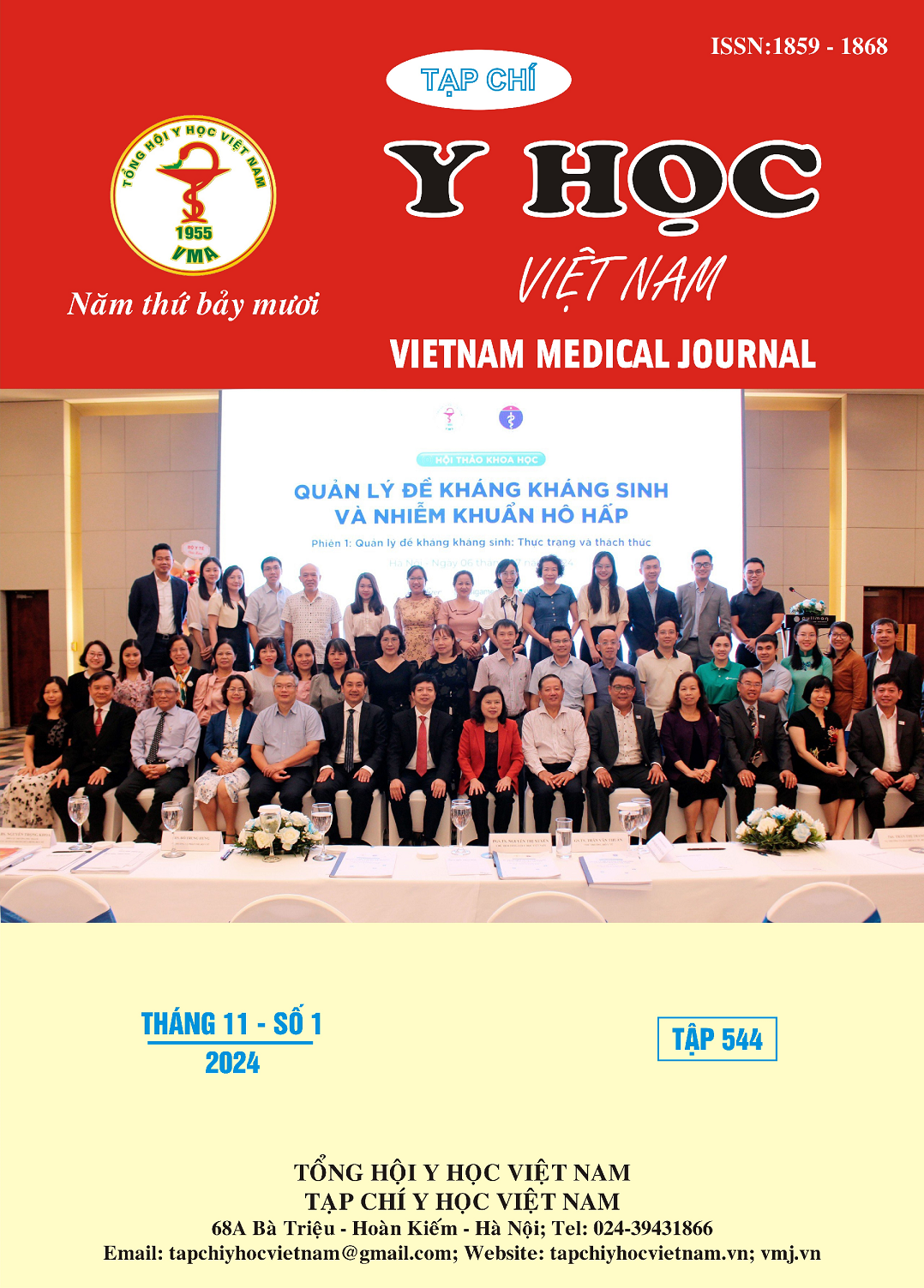RESEARCH ON CLINICAL CHARACTERISTICS AND SOME RELATED FACTORS ACCORDING TO TRADITIONAL MEDICINE IN PATIENTS WITH TYPE 2 DIABETES AT CAN THO TRADITIONAL MEDICINE HOSPITAL
Main Article Content
Abstract
Background: Diabetes mellitus (DM) is a non-communicable global disease that has increasingly become a social and economic burden. There are two types of diabetes: type 1 and type 2 diabetes, with type 2 diabetes being a metabolic disorder caused by multiple factors. However, there are very few scientific studies that specifically investigate the clinical characteristics and demonstrate the contributing factors to the disease according to Traditional Medicine. Objectives: To survey certain clinical features and investigate some factors related to these clinical features according to Traditional Medicine in patients with type 2 diabetes at the Can Tho Traditional Medicine Hospital. Subjects and Methods: This is a cross-sectional descriptive study conducted on 107 patients with type 2 diabetes. Results: Patients with type 2 diabetes aged ≥ 60 years (69.2%) had a higher prevalence than those under 60 years (30.8%), and female patients (61.7%) accounted for a higher percentage than male patients (38.3%). The highest contributing factor to type 2 diabetes according to Traditional Medicine was the deficiency of Zang-Fu organs (43.9%). For patients with the upper-Jiao pattern, the main cause of the disease was emotional disturbances (17.5%), for the middle-Jiao pattern, improper diet was the primary cause (5.2%), and for the lower-Jiao pattern, Zang-Fu organ deficiency was the main cause (44.3%). Conclusions: Most patients with type 2 diabetes in this study were over 60 years old. The primary Traditional Medicine cause of type 2 diabetes was Zang-Fu organ deficiency. There was a significant association between age and clinical patterns (p < 0.001), and between clinical patterns and the causes of the disease (p < 0.001).
Article Details
Keywords
Traditional medicine, Tieu khat, Type 2 Diabetes mellitus, Clinical Characteristics
References
2. Bộ Y Tế (2020), Hướng dẫn chẩn đoán và điều trị đái tháo đường típ 2, Quyết định số 5481/QĐ-BYT ngày 29 và tháng 12 năm 2020, Hà Nội
3. Lê Minh Hoàng, Châu Nhị Vân (2023), Nội Bệnh lý Y học cổ truyền (tập 3), Nhà xuất bản Y học, Thành phố Hồ Chí Minh.
4. Hội Nội tiết đái tháo đường Việt Nam (2016), Hướng dẫn chẩn đoán và điều trị bệnh nội tiết-Chuyển hóa, Nhà xuất bản Y học, Hà Nội.
5. Trịnh Thị Ngọc Huyền, Nguyễn Trọng Hưng, Nguyễn Huy Bình và cộng sự (2021), "Tình trạng dinh dưỡng và một số yếu tố liên quan của người bệnh đái tháo đường type 2 điều trị tại Bệnh Viện nội tiết Trung Ương năm 2020", Tạp chí nghiên cứu Y học, 146(10), tr. 150-157.
6. Nguyễn Thị Sơn (2022), "Đái tháo đường", Bệnh học và điều trị Nội Khoa kết hợp Đông Tây Y, tr. 150-165.
7. Nguyễn Thị Anh Thư, Phùng Đức Nhật, Tô Hoàng Linh (2021), "Chi phí điều trị nội trú của người bệnh đái tháo đường típ 2 tại Bệnh viện Quận 6 Tp.Hcm", Tạp chí nghiên cứu Y học, 142(6), tr. 119-125.
8. American Diabetes Association (2022), "Classification and Diagnosis of Diabetes: Standards of Medical Care in Diabetes", Diabetes Care. 45(1), pp. 17-38.
9. Cho Nam H, et al (2018), "IDF Diabetes Atlas: Global estimates of diabetes prevalence for 2017 and projections for 2045", Diabetes research and clinical practice, 130, pp. 271-281.
10. Wu Y Ding Y, Tanaka Y, Zhang W (2014), "Risk factors contributing to type 2 diabetes and recent advances in the treatment and prevention", Int J Med Sci, 11(11), pp. 185-200.


